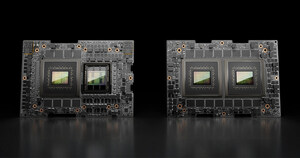Altair OptiStruct® Revolutionizes Lattice Structures for 3D Printing
Use of topology optimization enables design innovation
TROY, Mich., Feb. 26, 2015 /PRNewswire/ -- Altair today announced new OptiStruct® solver capabilities that expand topology optimization support for the use of additive manufacturing, or 3D printing. OptiStruct is an award-winning technology for topology, topography, size, and shape optimization that is included in computer-aided engineering (CAE) suite Altair HyperWorks®.
A unique capability of 3D printing lies in its ability to manufacture hollow shapes with complex external geometry using tiny cells known as lattice structures. OptiStruct now extends topology optimization to assist in the efficient blending of solid-lattice structures with smooth transitional material volume. Lattice performance can be studied under tension, compression, shear, flexion, torsion, and fatigue life. This new technology satisfies an unmet need, since no tools previously existed for designers of lattice structures. Now OptiStruct will provide CAE analyses for optimal and structurally efficient material distribution.
Topology optimization has long been employed by a variety of industries to create innovative, lightweight, and structurally efficient designs. This technology is particularly well-suited for use with 3D printing, since topology optimization tends to create free-form, organic structures that are often difficult or impossible to construct using traditional manufacturing methods. Therefore, some efficiency in optimized design concepts may be lost to comply with the constraints of a specific production process. 3D printing offers unprecedented form freedom, and its symbiosis with topology optimization enables greater creative expression while maintaining structural integrity and performance attributes.
"3D printing brings new structural freedom to product design, allowing more complexity in shapes and topology and the efficient production of customized products while accelerating the manufacturing process, since no tooling is needed," said Uwe Schramm, Chief Technical Officer at Altair. "Topology optimization maximizes this design freedom, enabling complex free-form structure development, seamless individual designs, a shorter design process, and optimal 3D-printed structures."
Altair is working with partners like Materialise to enable more efficient data transfer for 3D printing. Lattice structures may contain hundreds of thousands of lattice cells, so conventional STL file transfer can be a significant bottleneck for the overall process. Software packages like 3-MaticSTL from Materialise focus on improvements of a given lattice component to accommodate the various requirements of the 3D printing process, creating support structures where necessary.
In contrast to competitive technologies that simply apply lattice structures to existing geometry, OptiStruct actually enables the designer to identify the best material placement and lattice structures. Optimization identifies where material is needed in a design and where it is not required, prior to placing and optimizing lattice.
OptiStruct optimizes lattices in two phases. First, it applies standard topology optimization, allowing more porous materials with intermediate densities to exist. Then, the porous zones are transformed into explicit lattice structures with varying material volume. In the second phase, the dimensions of the lattice cells are optimized. The result is a structure with solid parts plus lattice zones with varying volumes of material.
There is a relationship to be explored between material density and part performance, for example with respect to the stiffness to volume ratio, that can impact design choices made early in the product development process. Porosity may be especially important as a functional requirement for biomedical implants. Lattice zones could be critical to the successful development of products where more than mere stiffness is required.
Some applications may need to consider buckling behavior, thermal performance, dynamic characteristics, and other aspects, all of which can be optimized. With OptiStruct, users may manipulate material density based upon the result of an optimization process, comparing stronger versus weaker, or solid versus void versus lattice, designs. The designer first defines the objective, then performs optimization analysis to inform the design.
"OptiStruct's lattice capability represents the first step towards integrating smart materials with unique properties in products," said Ming Zhou, Vice President of Software Development at Altair. "Continuing research and development will explore directional behavior and smooth blending of varying lattice cell layouts to take advantage of exotic material characteristics that could bring innovation to various applications."
About Altair
Altair is focused on the development and broad application of simulation technology to synthesize and optimize designs, processes and decisions for improved business performance. Privately held with more than 2,300 employees, Altair is headquartered in Troy, Michigan, USA, and operates more than 40 offices throughout 22 countries. Today, Altair serves more than 5,000 corporate clients across broad industry segments. To learn more, please visit www.altair.com.
Media Contacts
Altair Corporate/North America
Jennifer Korail
+1-248-304-1429
[email protected]
Altair Europe, the Middle East and Africa
Evelyn Gebhardt
+49 6421 9684351
[email protected]
SOURCE Altair
Related Links
WANT YOUR COMPANY'S NEWS FEATURED ON PRNEWSWIRE.COM?
Newsrooms &
Influencers
Digital Media
Outlets
Journalists
Opted In




Share this article